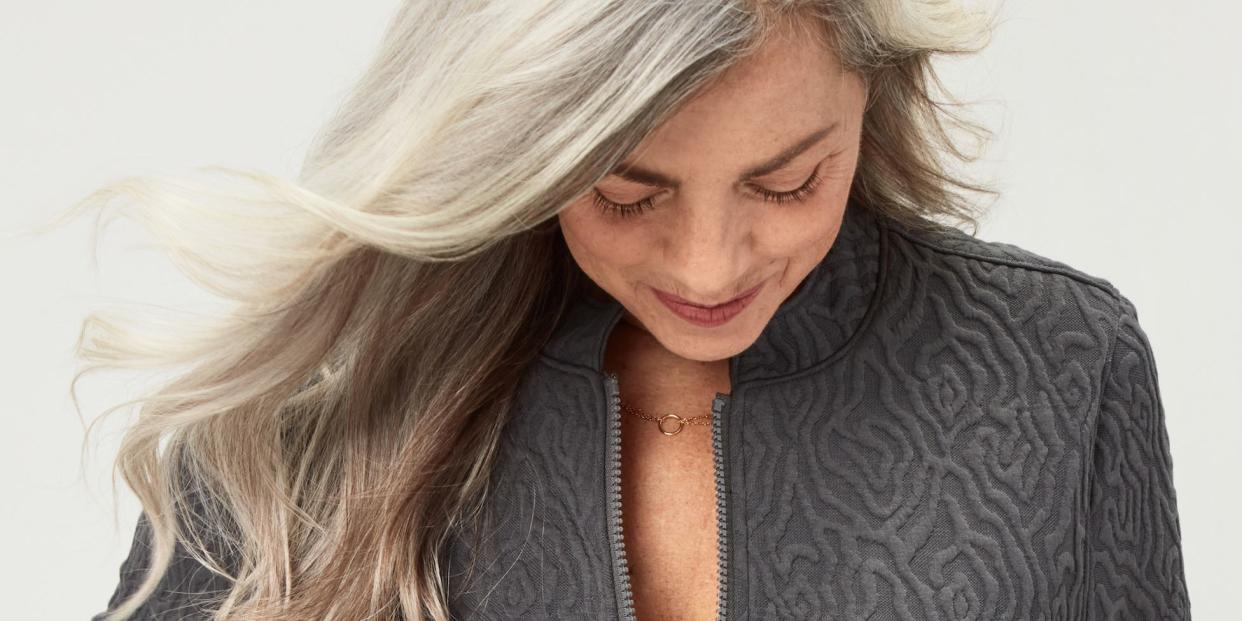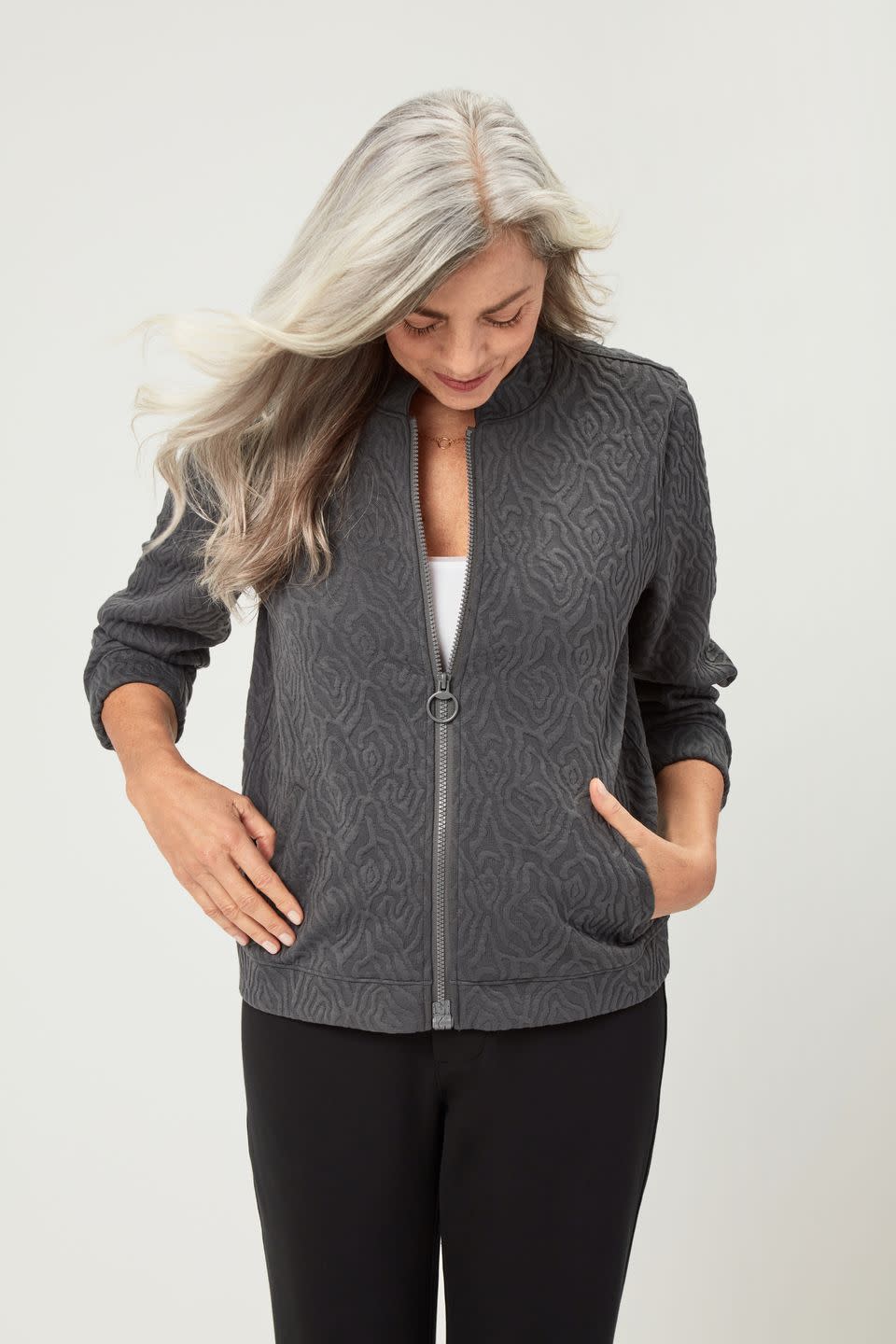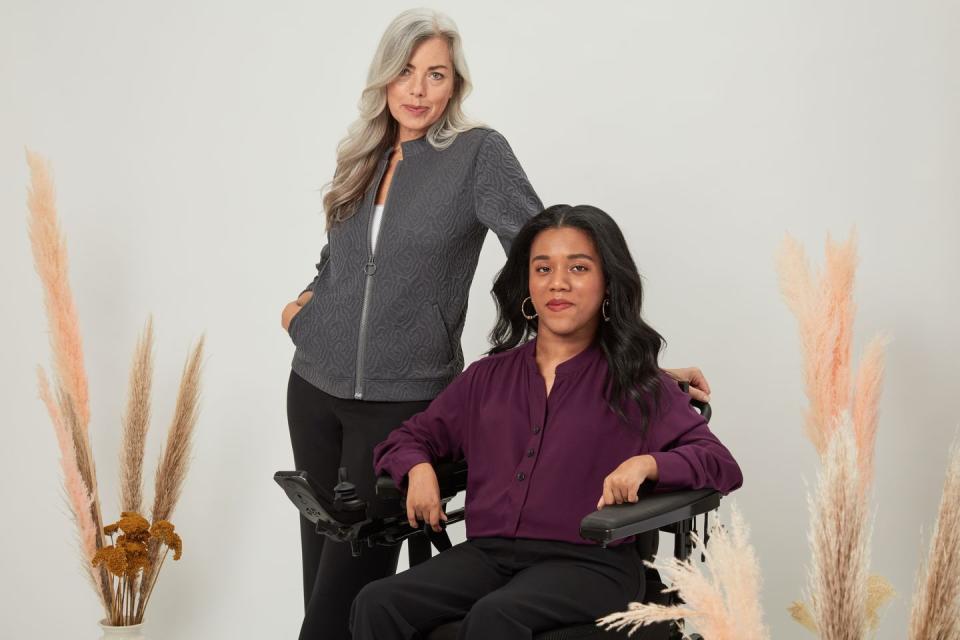This Brand Offers Stylish Clothing Specifically for People with Disabilities

For most of us, getting dressed every day is an activity so simple, we can do it in the dark (and sometimes do). We try on a shirt, then change our minds completely, swap it for a new one, throw on some jeans. But for the 61 million-plus Americans and Canadians with a disability, the tiny motions required for fastening a button or putting on a pair of pants can be part of a grueling, multi-step process that takes hours—if it can happen at all.
Maura Horton watched her late husband struggle with the buttons on his shirts, due to the brutal effects of Parkinson’s disease on his fine motor skills. Now, she hopes to give back both time and independence to the “adaptive community”—whether that means those coping with an illness, injury, disability, or just the everyday effects of aging—via her clothing company, Yarrow. Its skinny jeans, knit jackets, and tunic dresses look as effortlessly stylish as any other line, but these pieces feature clever tweaks that completely transform the way clothing functions.

Yarrow is Horton’s followup to MagnaReady, a men’s line she created in 2013. That brand’s crisp Oxford shirts close with small magnets, but feature just-for-show buttons that make them indistinguishable from other menswear. Horton’s husband Don was a 48-year-old football coach at North Carolina State in 2006 when he was diagnosed with early-onset Parkinson’s.
“One day after a game,” she says, “he was stuck in a locker room, unable to get dressed. A side effect of Parkinson’s is a lack of dopamine, which causes dexterity and mobility issues; he couldn’t get dressed to catch the team plane. He and one of his players at the time, Russell Wilson—who’s now with the Seattle Seahawks—were the only two left in the locker room. Russell came over and helped him get dressed in silence.”
When Don arrived home that night, Horton could see he was upset. “We really hadn’t talked about the progression of his disease yet,” she says, “and how it would affect his ability to do basic things.” Wanting to help, she hunted online for clothes tailored to his condition, but her shopping experience was a letdown.
“I overnighted a shirt,” says Horton, “and when we opened it, he looked at me like, Are you serious? It was paper thin, almost like a hospital gown, with velcro closures. Around the same time, I saw the iPad covers that were coming out with really small magnets inside. And I thought, If they can put them there, why can’t we put them into clothing?”

That's how Horton delved into a world of functional fashion that’s actually fashionable, teaming up with designers who understood the clothing concerns of those with physical challenges—which go beyond just fastening buttons. “We had to really look at how people use their clothing,” she says. “Do they need the rise in their jeans to be higher in the back, because they’re in a seated wheelchair? Do they need their pants' seams to be in a different place, so they don’t get pressure spots? Are they taking medications that could cause swelling or heat changes during the day? If they have a prosthetic limb, how could it get stuck when clothes are coming on or off?”
The result is clothing that does double-duty, like magnetized zippers that easily snap together or adjustable ruched sleeves for people with different length arms, or those who have a prosthetic and want their sleeves to hit at a certain spot. There are also tabs inside pants to make it easier for caregivers to pull them up.
But in addition to accessibility, Horton also wanted to make sure Yarrow pieces look good. “Even though we have faux buttons, we wanted them to be made of horn,” she says. “Ideally, you can’t tell it’s adaptive clothing—it should look just like any other clothing line out there.”
The emotional impact these people-friendly pieces can have has been immeasurable, according to Horton. “Getting dressed is so personal,” she says. “You don’t want anyone helping you if you don’t need them to. Just having some dignity back is pretty powerful.”
The feedback from customers has made an outsized impact on Horton, too. “A shirt might not seem like the most exciting gift, but we get emails where people say, ‘I saw my dad cry for the first time in a long while, because he was finally able to get dressed by himself.’ People are so excited to have options, because there are so few out there. And they’re empowered by being able to do something that most of us take for granted.”
For more stories like this, sign up for our newsletter.
You Might Also Like

